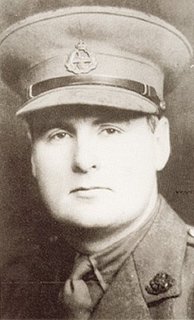Marcus Ervine-Andrews facts for kids
Quick facts for kids
Marcus Ervine-Andrews
|
|
|---|---|
 |
|
| Born | 29 July 1911 Keadue, County Cavan, Ireland |
| Died | 30 March 1995 (aged 83) Gorran, Cornwall, England |
| Allegiance | United Kingdom |
| Service/ |
British Army |
| Years of service | 1932–1952 |
| Rank | Lieutenant-Colonel |
| Service number | 50928 |
| Unit | East Lancashire Regiment |
| Battles/wars | North-West Frontier Second World War |
| Awards | Victoria Cross |
| Spouse(s) |
Emily Torrie
(m. 1939–1952)Margaret Gregory
(m. 1981) |
Harold Marcus Ervine-Andrews (born July 29, 1911 – died March 30, 1995) was a brave officer in the British Army. He was from Ireland and received the Victoria Cross, which is the highest award for bravery given to soldiers in Britain and the Commonwealth. He earned this award for his actions during the Second World War.
Early Life and Army Career
Marcus Ervine-Andrews was born in a place called Keadue in County Cavan, Ireland, on July 29, 1911. His father was a bank manager. He went to school at Stonyhurst College in England, which is a famous school. Seven people who studied there, including Marcus, later won the Victoria Cross.
In January 1932, Marcus joined the British Army as an officer. He became part of the East Lancashire Regiment. Before World War II, he served in India from 1936 to 1937. He was even recognized for his good work there, which is called being 'Mentioned in Despatches'. This means his bravery or good service was officially noted in a report.
Bravery at Dunkirk
Marcus Ervine-Andrews was 28 years old and a captain during the Battle of Dunkirk in World War II. This battle happened in France in May and June 1940. His company was ordered to defend a large area of land, about 1,000 yards (914 meters).
On the night of May 31, 1940, his company was greatly outnumbered by German soldiers. They were also under very heavy fire. When the Germans attacked at dawn and crossed a canal, Captain Ervine-Andrews acted quickly.
He gathered some volunteers from his company and rushed to a barn. From the roof of the barn, he bravely shot 17 enemy soldiers with his rifle. He also used a Bren gun to stop many more. Even when the barn was hit and caught fire, he kept fighting. He then made sure the wounded soldiers were sent to safety. Finally, he led the remaining eight men back to their lines. For this incredible bravery, he was awarded the Victoria Cross.
Life After the War
After the war, Marcus Ervine-Andrews tried to return to his home in County Cavan, Ireland. However, he faced difficulties and later settled in Cornwall, England. He continued his army career and eventually reached the rank of Lieutenant-Colonel.
From 1955, he also worked with the Leonard Cheshire Foundation. This foundation helps people with disabilities. He advised them on how to set up new homes for people who needed care.
Family and Later Years
Marcus Ervine-Andrews married Emily Torrie in 1939. They had two children, a girl born in 1941 and a boy born in 1943. After their marriage ended in 1952, he later married Margaret Gregory in 1981.
Marcus Ervine-Andrews was the last living Irishman to receive the Victoria Cross for his service in the Second World War. He passed away at his home in Gorran, Cornwall, on March 30, 1995, at 83 years old. His memorial is at Stonyhurst College, where he went to school. He wanted his Victoria Cross medal to be displayed at the Blackburn Museum and Art Gallery.

